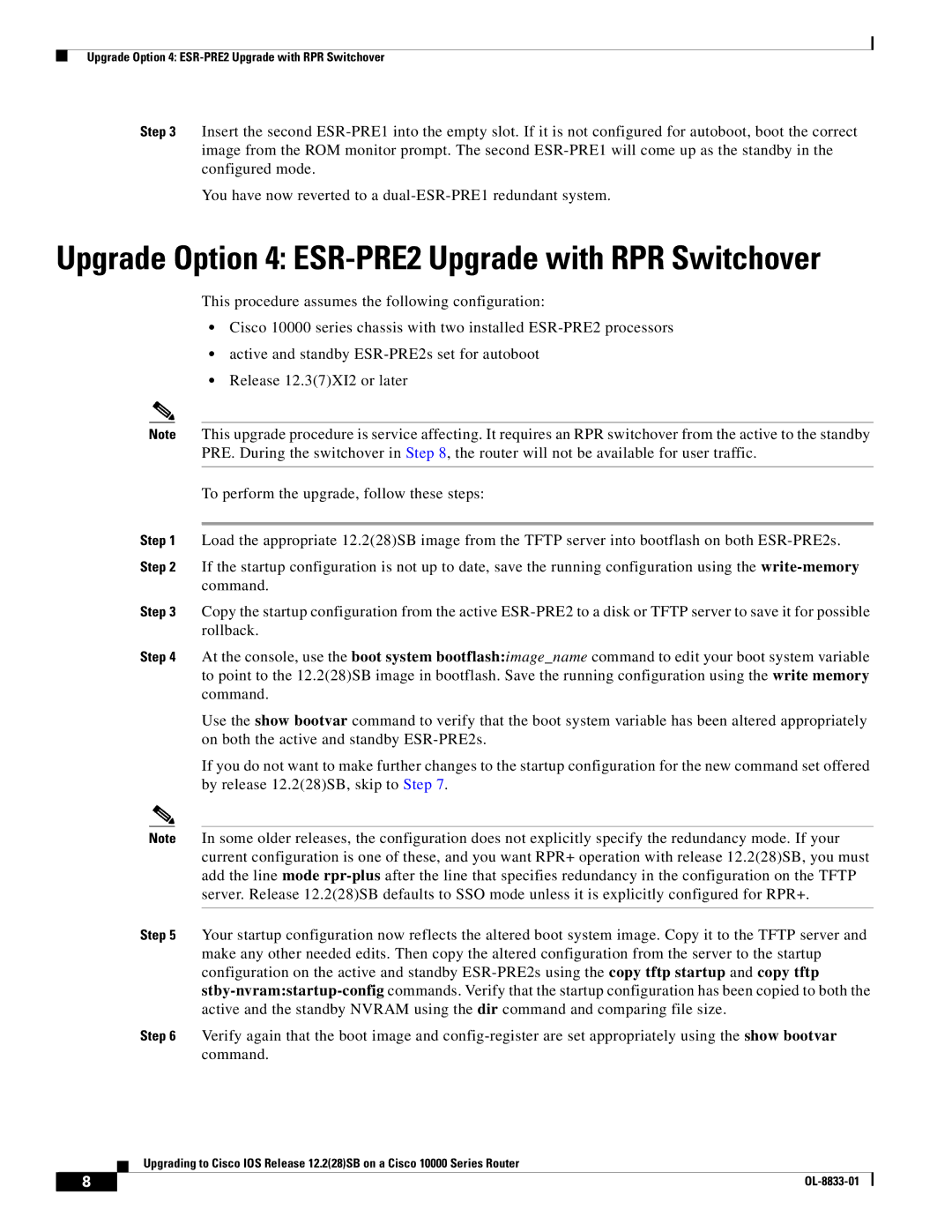
Upgrade Option 4:
Step 3 Insert the second
You have now reverted to a
Upgrade Option 4: ESR-PRE2 Upgrade with RPR Switchover
This procedure assumes the following configuration:
•Cisco 10000 series chassis with two installed
•active and standby
•Release 12.3(7)XI2 or later
Note This upgrade procedure is service affecting. It requires an RPR switchover from the active to the standby PRE. During the switchover in Step 8, the router will not be available for user traffic.
To perform the upgrade, follow these steps:
Step 1 Load the appropriate 12.2(28)SB image from the TFTP server into bootflash on both
Step 2 If the startup configuration is not up to date, save the running configuration using the
Step 3 Copy the startup configuration from the active
Step 4 At the console, use the boot system bootflash:image_name command to edit your boot system variable to point to the 12.2(28)SB image in bootflash. Save the running configuration using the write memory command.
Use the show bootvar command to verify that the boot system variable has been altered appropriately on both the active and standby
If you do not want to make further changes to the startup configuration for the new command set offered by release 12.2(28)SB, skip to Step 7.
Note In some older releases, the configuration does not explicitly specify the redundancy mode. If your current configuration is one of these, and you want RPR+ operation with release 12.2(28)SB, you must add the line mode
Step 5 Your startup configuration now reflects the altered boot system image. Copy it to the TFTP server and make any other needed edits. Then copy the altered configuration from the server to the startup configuration on the active and standby
Step 6 Verify again that the boot image and
Upgrading to Cisco IOS Release 12.2(28)SB on a Cisco 10000 Series Router
8 |
| |
|
